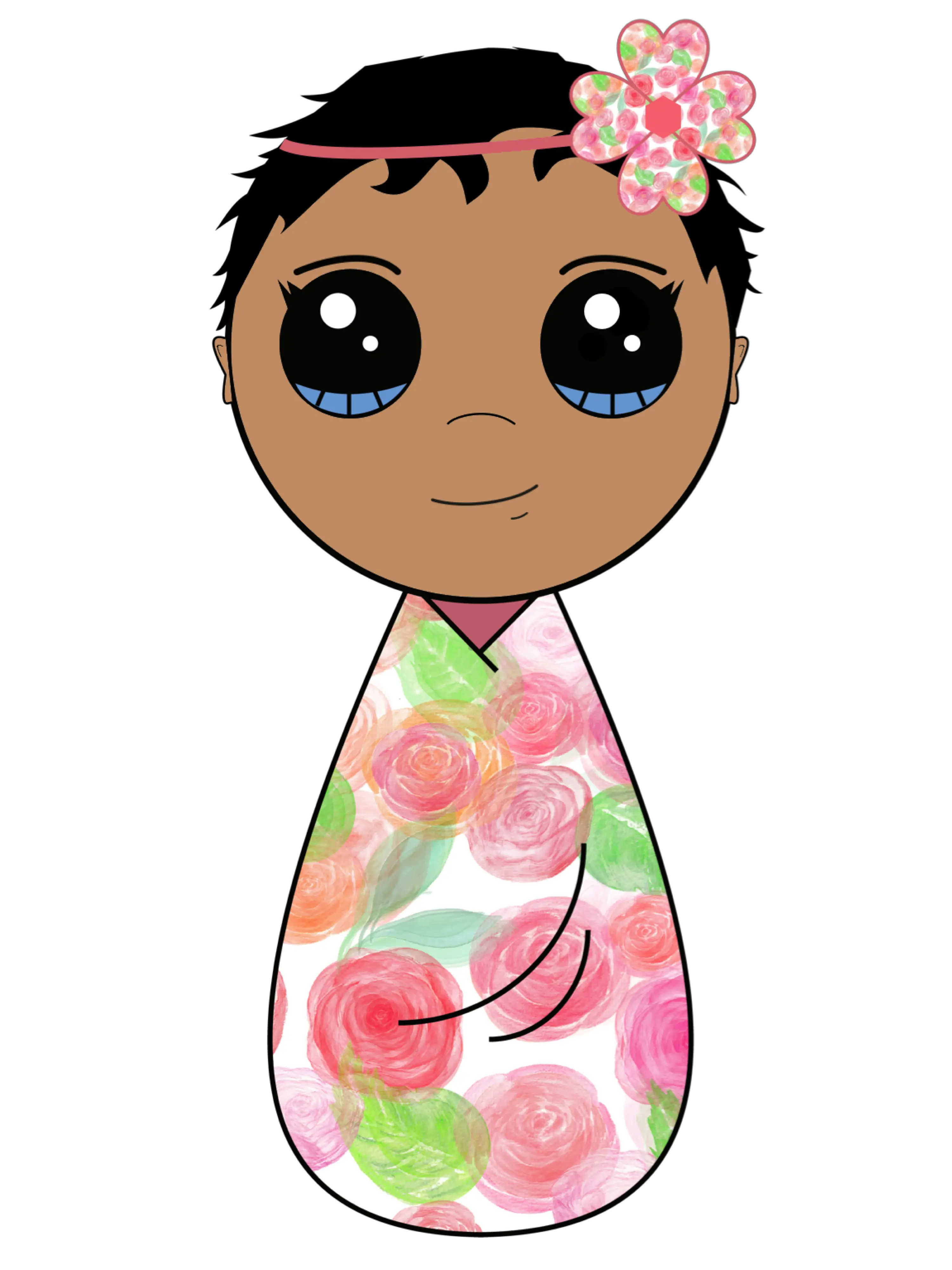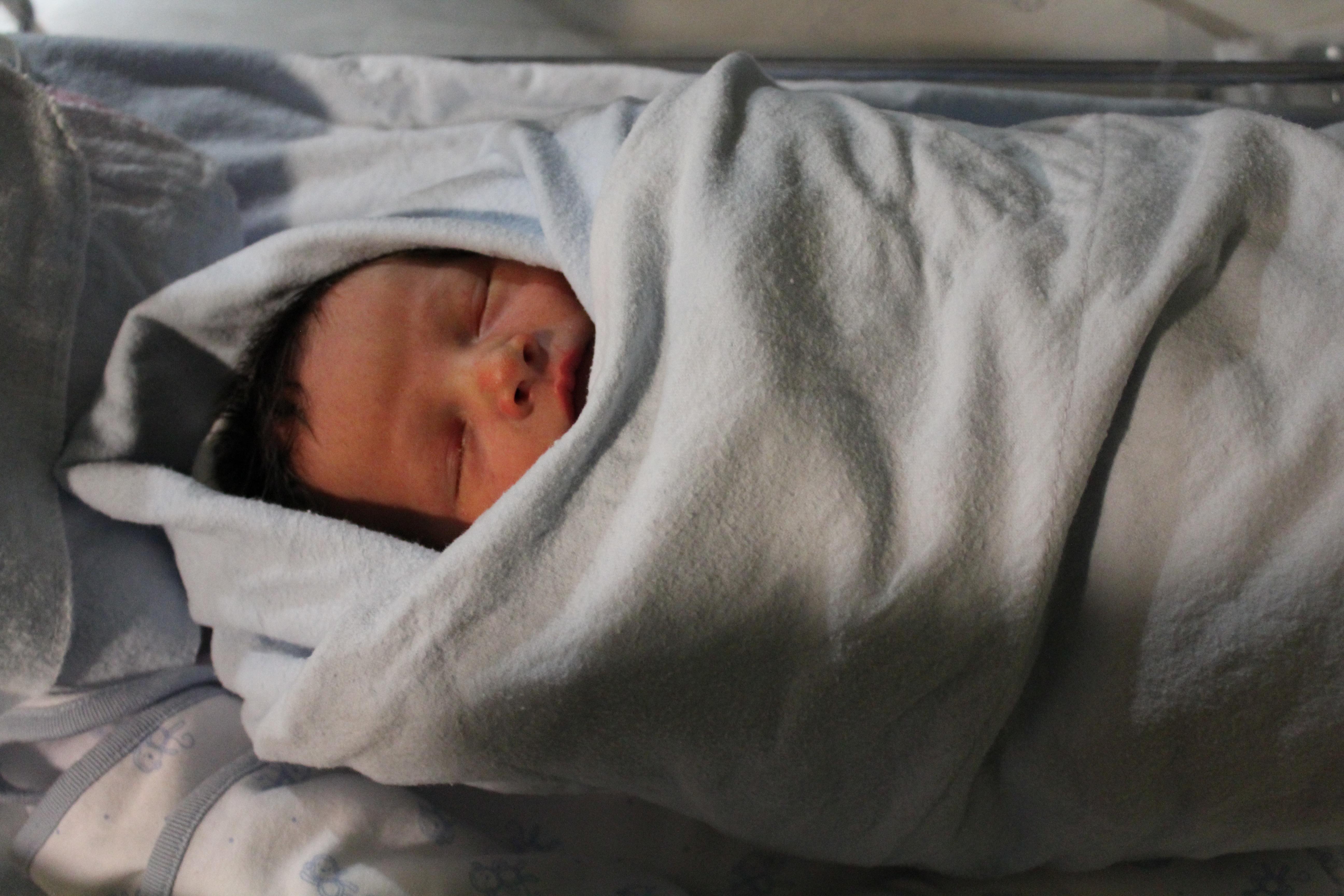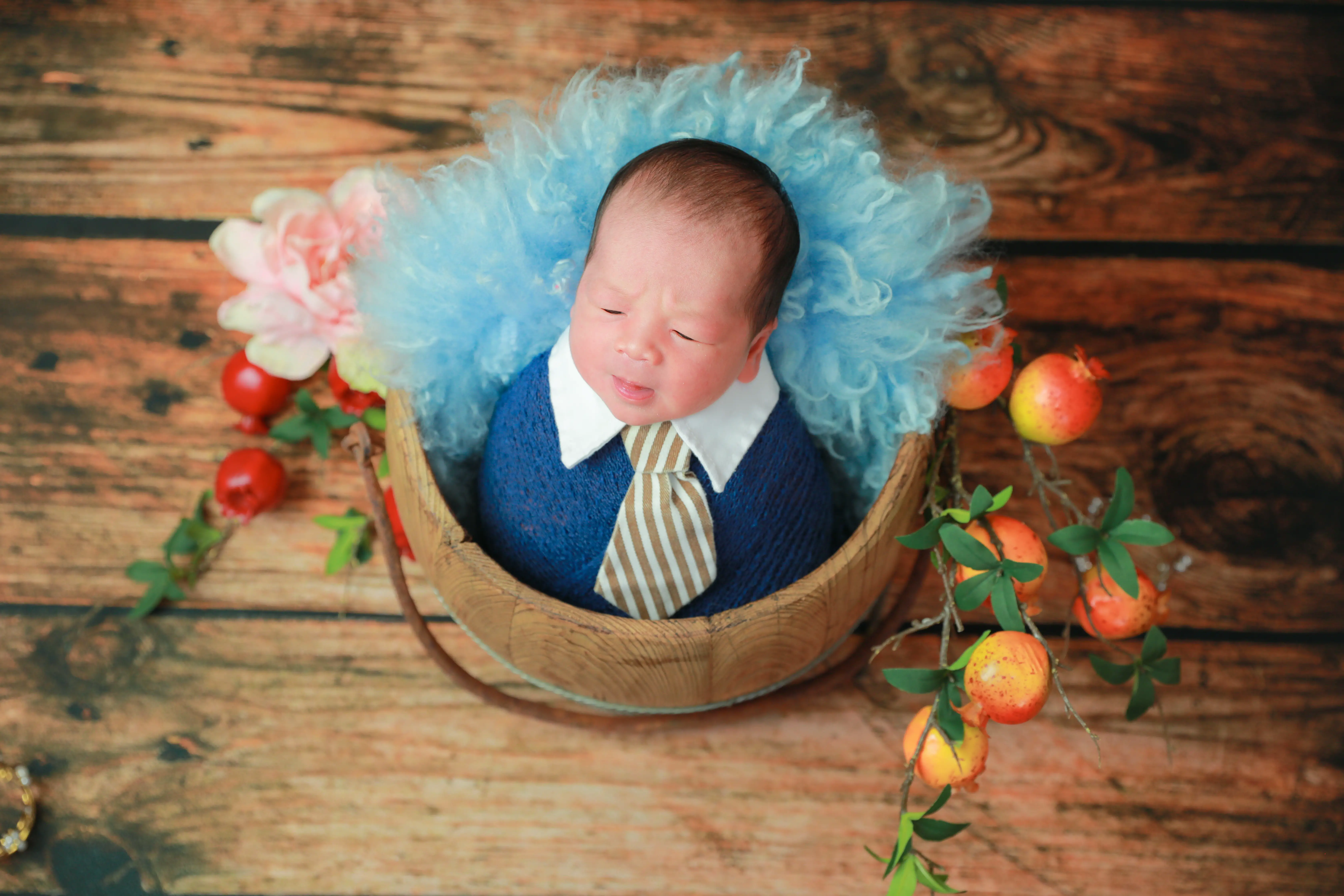Table of Contents
How to transition out of swaddle? As many new parents have discovered, swaddling may be a great way to soothe their infant and catch a few extra hours of sleep. But how will you know when it’s time to say goodbye? What comes next?
Knowing what to look for when it’s time to leave the swaddle, how to transition out of swaddle effectively, and what comes next can be quite beneficial as your baby grows.
What Is Swaddling?
Before you learn how to transition out of swaddle let’s know what swaddling actually is. Swaddling is more common than you believe if you’ve ever seen a newborn wrapped up like a tiny little burrito. Swaddling is a method of putting a blanket around your baby so tightly that they cannot wiggle out. Many parents learn to swaddle their newborns from the nurses at the hospital. When done correctly, it is a safe and effective method of soothing and comforting an infant.
Why Swaddle a Baby
Before you get a question about how to transition out of swaddle? There are a few reasons to swaddle your baby:
- Swaddling gives your baby a sense of safety and security. A Tight swaddle simulates the tight feeling your newborn had in the womb.
- Swaddling your newborn can help prevent startle reflexes. The startle reflex, also the Moro reflex, is a reaction present at birth. When your newborn’s arms or legs jerk in their sleep, you’ll know it’s happening. It’s completely natural, and your baby will grow out of it soon, but it’s also a familiar source of newborn wakeups.
- Swaddles have replaced loose blankets in the crib. A swaddle keeps your infant warm without the risk of suffocation that a loose blanket poses in your child’s sleeping area.
Benefits of Swaddling
There are many reasons why many parents prefer to swaddle their babies. Swaddling is also recommended by the American Academy of Pediatrics (AAP)
When done correctly, some of the benefits of swaddling include:
- Sleeps that last longer.
- A way to stop the startle reflex.
- Helping your baby calm down and feel safe and comfortable.
- A great way to learn safe methods to sleep and keep loose blankets from getting in the crib.
When should you start transitioning out of the swaddle?

How to transition out of swaddle? Why make a change if your baby is happy, comfortable, and sleeping well in their swaddle?
It’s a good question. But keep in mind that swaddling isn’t meant to last forever. It’s just a quick way to help babies get used to life outside the womb. As a baby gets bigger and more mobile, swaddling can become dangerous.
If your baby starts to turn over on their side or stomach, it might be time to stop swaddling them. A swaddled baby shouldn’t sleep on its back because this increases the risk of SIDS.
It’s also time to switch if there are signs that your baby doesn’t like being swaddled anymore, like if they fight against it or try to get out of the blanket at night.
And you may stop swaddling your baby once his or her startle reflex goes away. It is a movement response that babies have after they are born. It happens most often when they hear loud sounds. Swaddling helps babies feel safer by calming this reflex.
How to transition out of swaddle:
Ways to transition a baby out of a swaddle: Even though every baby eventually grows out of the swaddle (they won’t be wearing it to college, but they might wear a Snuggie), it can take a few days to get used to sleeping without it. Below are a few tips you can follow to make the transition out of swaddle a little easier.
Cold turkey
No one can tell how a baby will change until the process starts. So, “cold turkey” is a method that some parents use. They take the blanket or swaddle off completely and then watch how their baby reacts.
Some babies get used to it right away, but it takes a few nights for others, so get ready for a little crying. Babies who are good at soothing themselves might do better with the cold turkey method.
If your baby is still learning to relax on their own, taking away the swaddle could wake them up (and yours).
Partial night swaddling
Another way to do it is with a partial night swaddle. At first, your baby sleeps without a swaddle for about a third or half of the night.
If your newborn wakes up crying, you can swaddle them until morning. The best thing, though, is for your baby to sleep longer and longer each night without being swaddled until they can sleep through the night without being wrapped.
You should begin using this method before your baby can roll over. If they roll over, even if it seems like an accident, they can’t stay safe in a swaddle for the rest of the night.
Swaddle with one arm in and one arm out.

You can also make the transition slowly by swaddling your baby with one arm in and one arm out. This way, your baby will feel safe and comfortable and get used to sleeping without a blanket.
Start by leaving one arm out for a few nights. Then leave both arms out for a few nights (or more) before taking the blanket off completely.
You can use a regular swaddle blanket with this method. Or, buy a swaddle that can be used with the arms in or out.
Use a sleepsuit
Another good way to transition a baby out of swaddle is to put him or her in a sleepsuit, also called a wearable blanket. There are several styles. Some suits have a small, slightly weighted pad in the middle that feels like a hand on a baby’s chest.
Sleepsuits make babies feel safe and comfortable and lessen their startle reflex. Some look like onesies, but the legs and arms holes are a little longer. Others look like a quilted blanket.
They are also warmer and thicker than a onesie or pajamas, so don’t put your baby in one if he or she has a fever. The Baby Merlins Magic Cotton Sleep Suit or the Halo SleepSack are two options you can find online.
Use a swaddle strap.
It is also a good way to help a baby slowly move out of a full swaddle. You’ll open the strap, put your baby in the center between the soft supports, and then circle each end of the strap around your baby’s chest.
It only covers the arms, so your baby’s legs and feet are free. It lets them get used to sleeping without being wrapped up tightly. Some straps are made to keep both arms in, while others let one or both arms out. The two online options are the Anna and Eve Baby Swaddle Strap and the SwaddleMe Love Sack Swaddle Wrap. The SwaddleMe Love Sack Swaddle Wrap has a sack area for the feet, so it’s not just a strap.
Newborn Swaddle vs. Sleepsack Swaddle

There are different kinds of swaddles, such as traditional swaddle blankets, two-in-ones, and sleep sacks.
Traditional swaddling blankets are big and thin. They are mostly muslin, cotton, or bamboo, all breathable, soft, and stretchy.
Two-in-one swaddle makes swaddling a little bit easier. They often have zippers, snaps, or Velcro that make swaddling easier and keep the baby safer. You can also wrap your baby tightly or leave their arms out.
A baby’s sleep sack is like a small sleeping bag often made of cotton, fleece, or wool, and a sleepsack swaddle is also called a wearable blanket. It has zippers or snaps, making it easy to put on and take off. Many parents switch from a traditional swaddle to a sleepsack swaddle as their babies get older.
How to Swaddle a Baby
Putting your baby in a swaddle can be scary the first time or two you do it. But, as with most things, practice makes anything perfect, and the more you swaddle, the better and faster you’ll get.
For a “down, up, down, up” swaddle with a traditional swaddling blanket, follow these simple steps:
- Set your swaddling blanket down on a flat, soft surface.
- Make a triangle by folding the top corner of the blanket down. If you’re using a big swaddle blanket, you can fold it down. If your swaddle blanket is small, you can only fold it halfway.
- Face your baby up and rest their shoulders on the swaddle’s edge.
- Put one arm gently against the side of the baby. Once that arm is tucked in, bring the corner of the swaddle from the same side over and tuck it under the baby’s body on the other side.
- Bring the end of the swaddle up to the baby’s shoulder and tuck it behind their body.
- Take the other arm of the baby and tuck it against their side. Then, fold the corner of the swaddle over the baby’s body and tuck it in. The top of the swaddle should look like a V-neck under the baby’s chin.
- Take any extra material and wrap it around your child again.
How to transition out of swaddle : A few things to remember:
- Go for tight, but not too tight. Your baby needs to be tightly wrapped in the swaddle to work and stay in place, but you don’t want it to fit too tight. Try to balance being snug and safe and being too tight.
- Keep hips loose. Too much swaddling can cause hip dislocation or dysplasia in babies (an abnormal hip joint formation). Ensure your baby’s legs can move up and out while swaddled to stop this from happening. (According to AAP, about two or three fingers should be between the swaddle and the baby’s chest.)
- Power through the fuss. Some babies stay very calm when swaddled, but others don’t. Don’t give up! Most babies love being swaddled, even if they don’t like being in the swaddle. Be kind but strong.
- Back is best. Even if your baby is all wrapped up, you should always put him to sleep on his back. It can help make SIDS less likely.
How Long Do You Swaddle a Baby?
One of the questions that new parents ask most often is how long they can wrap their baby safely in a swaddle. It’s crucial to know what signs to look for to know when your baby is ready to stop being swaddled and at what age most babies make the change.
When swaddling your baby, the most important thing to pay attention to is whether or not he or she can roll over. As soon as you see your baby trying to roll over, you should stop using the swaddle and learn how to transition out of swaddle. That’s because a swaddled baby can’t move their arms, and if they roll over while swaddled, they’ll end up in a very dangerous sleep position.
Rolling happens at different times for each baby, but on average, it happens between two and four months.
You can also watch for these signs from your baby that it’s time to transition out of swaddle:
- Your baby is always getting a free arm, leg, or whole body out of the swaddle during naps or overnight.
- Your baby wakes up in a different posture every time.
- Your baby is in a swaddle, but suddenly, they seem more irritated, uncomfortable, angry, or sad.
Will My Baby Sleep Without the Swaddle?
It might be easy to transition out of swaddle for babies who don’t need to be swaddled as much for comfort and who are good at soothing themselves.
Your baby might sleep just as well or even better if he or she isn’t swaddled. Babies who are increasingly resistant to the swaddle may welcome it!
If your newborn needs to be swaddled to sleep, it might be hard to stop.
Stop swaddling a baby slowly. Over time, you will get strong enough that you won’t need to swaddle. The idea is that this slow, gradual change will help a baby get used to sleeping without being swaddled, without causing him or her to lose a lot of sleep. It also keeps you from losing a lot of sleep.
When Does the Startle Reflex Go Away?
Another sign that it’s time to stop swaddling and transition your baby out of swaddle is that their startle reflex is gone. It usually happens between three and six months of age.
How to transition out of swaddle: Transitioning Out of a Swaddle
You’ve taken off the swaddle, but what’s next? It can be scary for new parents when babies grow out of their swaddles. It’s hard to change anything about how your baby sleeps, But what about taking away something you know helps babies sleep better and for longer periods? A few tricks, though, will make the transition out of swaddle easier than you might think.
How to transition out of swaddle : Best Transition Swaddle
Try a transition swaddle like Halo’s SleepSack Swaddle if your baby isn’t showing signs of rolling over yet but is always getting out of a traditional swaddle blanket. This Velcro swaddle can be put together in different ways so that you can wrap your baby’s arms inside or outside.
Another popular and effective transitional swaddle is the Baby Merlin’s Magic Sleepsuit. The extra-thick layers of this zip-up suit protect the baby just enough to stop their startle reflex and make them feel safe and comfortable. Plus, your baby will look like the most adorable little marshmallow ever.
Sleepsack Swaddle
Once their babies are too big to be swaddled, many parents switch them to a sleep sack. With a sleep sack, your older baby can move their arms and legs much more freely than they could with a traditional swaddle. It is designed to be worn over pajamas and is an excellent technique to keep older babies warm without using a blanket in the cot.
One of the best is the SleepSack Wearable Blanket from Halo. It’s cheap and light, and the zipper on the bottom makes it easy to change diapers.
How to transition out of swaddle: Transition Tips

Here are a few more tips on how to transition out of swaddle:
- Before you stop swaddling your baby altogether, try it for a few nights with one arm in and one arm out. This method can help make the change a little less hard.
- Swaddle overnight instead of during nights and naps. It may assist your baby get used to sleeping “free” and will help them get used to how open their crib feels, even if it’s just for a short time.
- Swaddle baby every other night. Keep doing this for about a week to see how they do. If you don’t notice much difference, you can probably stop swaddling them altogether.
How to transition out of swaddle: Alternatives to Swaddling
Swaddling helps most babies, but it doesn’t work for everyone. Some babies seem to get more upset instead of less when they’re swaddled, while others seem to be constantly frustrated by the tight confines swaddling gives them and spend more time trying to get out than doing anything else. But don’t give up! There are some alternatives to swaddling.
- Before you give up on swaddling, ensure you’re setting your baby up for a good night’s sleep. Set up a night-time regimen as soon as possible, swaddle your baby in a completely dark room, and think about adding white noise from a fan or a sound machine. You might also try swaddling your baby before he or she shows signs of being too tired. It can help stop fussiness and may make your baby less likely to fight with you.
- If you or your baby don’t like traditional swaddling, try a two-in-one or even a simple sleep sack. They are easy to put on and take off, and some babies like them even when they are brand new. You can also try wrapping it differently.
- Swaddle your baby with swaddles made of different materials and with different levels of warmth. A simple change in temperature or texture can make all the difference for a fussy baby.
Final words: How to transition out of swaddle
How to transition out of swaddle? Swaddling is an effective way to assist a newborn in adapting to life outside the womb. But at some point, usually between 3 and 5 months, babies must stop being fully swaddled.
During this time, your baby might fuss or have trouble sleeping, but don’t give up. It will get better, and both of you can sleep through the night without waking up, and these steps toward independence will keep coming. You should now know how to transition out of swaddle.
FAQs: How to transition out of swaddle
1. How long does it take to transition a baby out of the swaddle?
How to transition out of swaddle? When your baby is 3 to 5 months old, you should start to transition your baby out of the swaddle. Every baby is different, so have patience and don’t give up! Most babies can stop being swaddled after 7 to 10 nights.
2 How many hours a day should a newborn be swaddled?
It’s essential to give your baby time to stretch and breathe after you take them out of their swaddle. Swaddling, on the other hand, can help babies feel calm and can be done for up to 20 hours a day.
3 Should I swaddle my baby for naps during the day?
Babies should always be swaddled when they sleep if it makes them feel better. When you take the baby out of the swaddle, you must pay attention to how they sleep during naps and at night.
4 When should you stop swaddling your baby?
When your baby starts rolling in their sleep, that’s when you should stop swaddling and start transitioning out of a swaddle. It usually happens between 2 to 4 months, and it’s important so that your baby can roll back onto their back if they fall on their stomach. You should now know how to transition out of swaddle.

